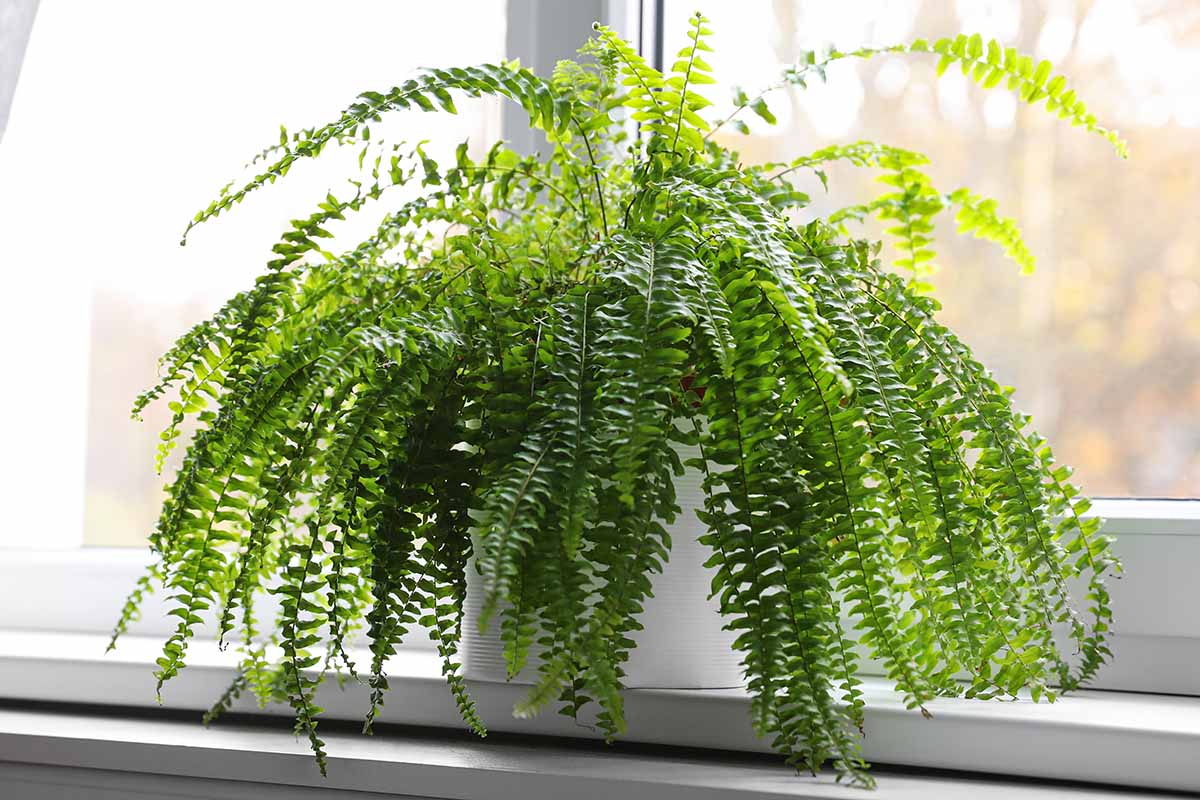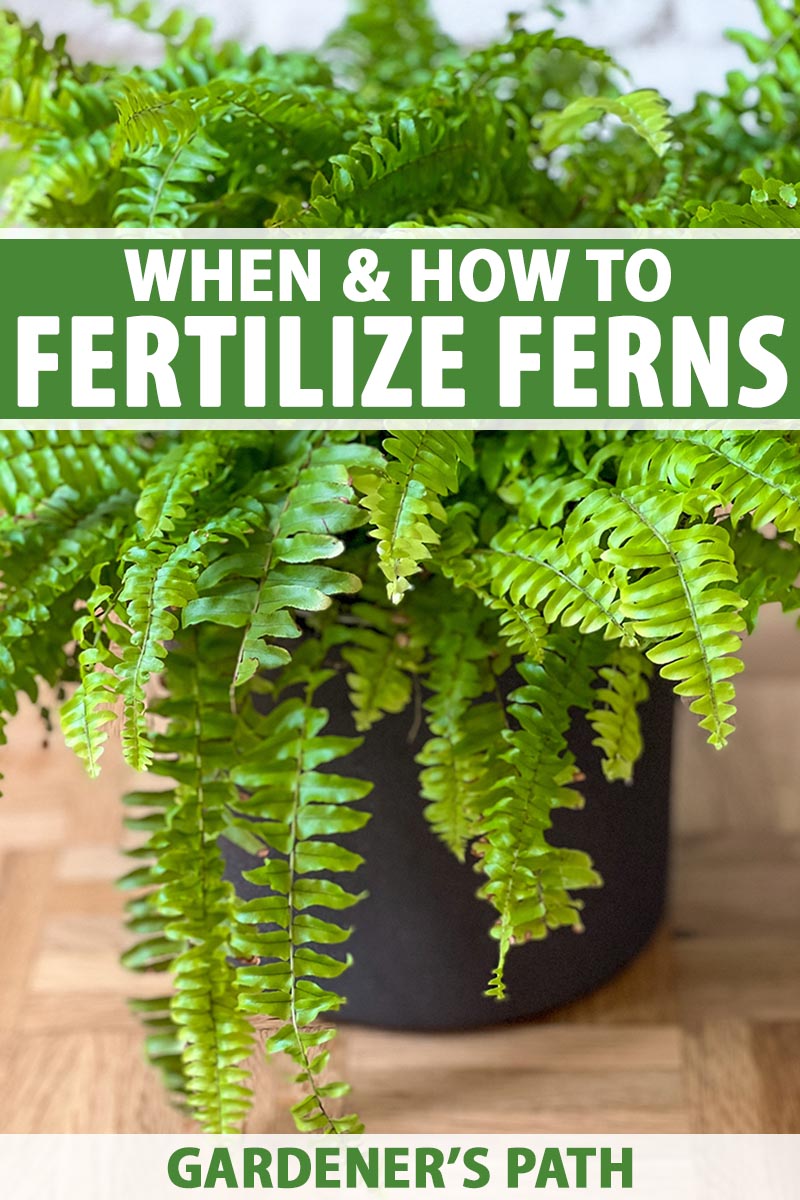fern are my go - to anytime I want to add together forest vibes to an indoor blank . A Boston or maidenhair fern is such a gorgeous way to capture the woodland palpate .
And with an tremendous diverseness of unlike metal money available , there ’s a fern for pretty much any growing surroundings – indoors or out .
These flora grow on every continent but Antarctica and in all USDA Hardiness Zones from 1 to 13 , from the dry desert to the icy mountaintops .

Platycerium CoronariumStaghorn Fern.
We unite to vendors to help you find relevant product . If you buy from one of our links , we may bring in a commission .
Since they grow in such a diverse range of habitats , there is n’t a “ one - size - fits - all ” approaching togrowing ferns .
But whether you are educate them indoors or out in the landscape painting , all fern postulate food , and that mean more than likely you ’ll need to fertilise them at some point .

Platycerium CoronariumStaghorn Fern.
An underfed specimen is n’t going to grow well or look its best . It might even conk .
I call up my very first maidenhair houseplant . I had heard how temperamental these plant are and I babied the heck out of that thing . I affirm if I ’d had to massage the frond to keep it salubrious , I would have !
That ’s when I realized what a difference fecundate really take a shit . With heedful feeding , I had one glad plant .

In this guide , we ’re move to discuss everything you need to hump about how to fecundate your ferns to keep them happy and prosperous .
Keep in judgment that there are oodles of ferns that we grow as houseplants and they differ in their nutritional and environmental needs .
What an epiphyticstaghorn ( Platyceriumspp.)requires is much unlike from what a cool - weather - loving holly fern ( Cyrtomium falcatum ) want .

So there ’s no one method of caring for such a diverse range of plants . Most of the type that we grow indoors come in from tropical or sub - tropic regions and have fairly standardized needs .
The advice in this usher applies to the most common species , like American maidenhair fern ( Adiantum pedatum),bird ’s nest ( Aspleniumspp . ) , Japanese painted ( Athyrium niponicum ) , crocodile ( Microsorum musifolium),Boston ( Nephrolepis exaltata ) , release ( Pellaea rotundifolia ) , andrabbit ’s foot ( Davallia fejeensis ) .
Most of these prefer temperate temperatures and wet .

If you have a rare case or one that fare from a desert or super cold climate , two-fold check the specific needs of the specie before feed .
Why You Should Fertilize
Container plants bank on us gardeners for all of their food and water requirement . They ca n’t access what they need in the environs as they could if they were growing outdoors .
Underfed specimen will be stunted , might turn lily-livered , and could even die .
When fed appropriately , the plants will grow lush leaf , and will be rich enough to crusade off possible pest or disease problem .

Many potting mediums will contain some dull - release nutrients , so you might not need to prey right by after repotting . But over sentence , these nutrient leach out and you take to supplement with plant food .
In addition to supplying enough fertilizer , it ’s recommended that you repot your indoor fern on a regular basis , to review the potting filth even if you do n’t need to increase the size of the container .
When to Feed
Ferns are relatively light-colored eater . In general , specie that fly high in sunny conditions will need more frequent eating than those that grow in dark condition .
That ’s because those rise in the nicety photosynthesize far more slowly and need less energy than those in the sun .
Feed your potted plants once a month during the bound and summer using a mild , balanced fertilizer or a product that has a slightly higher proportion of nitrogen compare to atomic number 19 and daystar . We talk more about this in the next part .

It ’s best to avoid feeding in the wintertime because that ’s when most are growing very slow or even partially dormant .
We do n’t desire to be encouraging new growth when they ’re storing up energy for next season ’s growing spurt .
However , if you revere that your flora is seriously depleted , go ahead and run whenever you need to .

I ’ve inherit ferns that I strongly surmise had n’t been fed in years , if ever . I decided it was better to feed in the winter than wait until spring .
What Type of Fertilizer to Use
As note , a meek , balanced intellectual nourishment or one with a slightly higher ratio of atomic number 7 is ideal .
I prefer feeding using a liquid soil fertilizer , but pellets are fine , too . Avoid using foliar food because many ferns are raw to this type of plant food and it can burn the fronds .
you may tell if a fertilizer is balanced or gamey in nitrogen by face at the NPK proportion , which will be printed on the label .

NPK stands for nitrogen ( N ) , phosphorus ( phosphorus ) , and potassium ( K ) – the major macronutrients – and the numbers tell apart you the proportion of each food in that particular product .
You need something like 1 - 1 - 1 , 2 - 2 - 2 , 3 - 3 - 3 , 3 - 2 - 1 , or like . A product with an NPK ratio above 10 - 10 - 10 is too strong and should be diluted by half .
I generally forefend plant food made from stinky materials like fish meal or blood repast when feeding indoor plant , just because it will smell pretty ripe for a while until it snap off down .
My go - to fertilizer for fern and many other houseplant is Dr. Earth ’s Pump and Grow .
This is a cosmopolitan - intention fertiliser made out of waste food scraps from food market stores and the ticker bottleful is A-one ready to hand .
It has a NPK ratio of 1 - 1 - 1 which is perfect for feeding your indoor specimens .
Dr. Earth Pump and Grow
Snag yoursat Arbico Organicsin a 16 - ounce bottle .
Down to Earth ’s Bio - Live has a NPK proportion of 5 - 4 - 2 , which is perfect for ferns with its slightly high nitrogen cognitive content .
Plus , this Cartesian product contain good bacterium and mycorrhizae to make a healthy produce environment .
Down to Earth Bio - Live
Pick some upat Arbico Organicsin five- , 25- , or 50 - Sudanese pound boxes .
Feed for Fabulous Foliage
Although they are not peculiarly demanding , allow for your fern with supplemental nutrition in the kind of fertilizer helps to insure they have everything they need to thrive .
Do n’t halt now ! teach more about the mythological human beings of ferns in the following guides :
© Ask the Experts , LLC . ALL RIGHTS RESERVED.See our TOSfor more details . intersection exposure via Arbico Organics . Uncredited pic : Shutterstock .
About
Kristine Lofgren